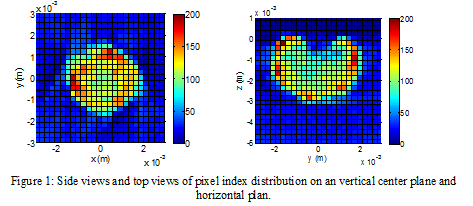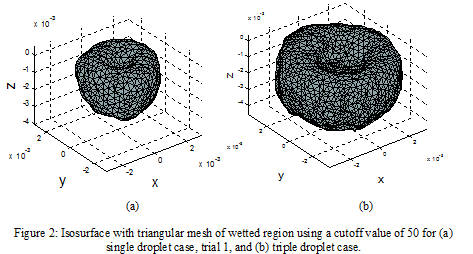Liquid droplet sorption in dry porous media is an important process for a wide range of scientific and engineering applications. However, visualizing droplet sorption is difficult due to the opacity of the porous media used in most of the applications. In this study, micro-CT technology is used to characterize the sorption profiles of nanofluid droplets in PMMA powder beds. Scan results reveal that the region of the powder bed wetted by the nanofluid has substantially higher pixel index values than the dry powder, thus enabling visualization of the sorption profile. The wetted regions themselves consistently have semi-spheroid shapes with craters on the top surface. The craters may be induced by powder repacking rather than droplet inertia ejecting well-settled powder particles.

The sorption of multiple droplets maintains the features of a single droplet granule but increases the lateral spreading more than the penetration in the vertical direction.

The inhomogeneous distribution of the pixel index value suggests accumulation of the nanofluid near the wetting front due to inhomogeneous porosity in the wetted region of the powder bed. It is considered that droplet sorption and capillary force may cause the powder particles to repack to generate a low porosity in the center of the wetted region. Nanoparticle distribution in the powder bed after complete evaporation of the nanofluid was also visualized. In conclusion, nanoparticle-enhanced micro-CT imaging has demonstrated the feasibility to visualize three-dimensional sorption profiles of a fluid in dry porous powder beds and thus provided an efficient means to study the sorption process in an opaque porous medium. We also envision that micro-CT can be utilized to characterize nanoparticle distribution in porous media in applications where nanomaterials are introduced for additional functionality of the final products.